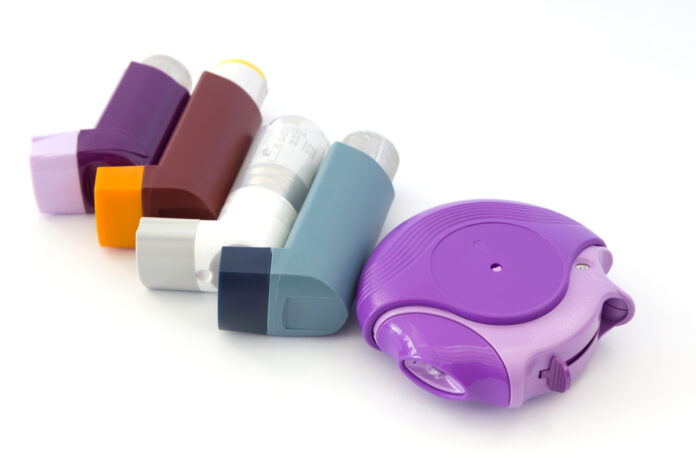Have you ever had to use an inhaler to treat a respiratory condition? These medical devices are lifesavers providing metered-dose medical relief for people who have asthma, COPD, and other conditions that compromise breathing.
At the same time, however, the vast majority of inhalers have a dark side. Generically called metered-dose inhalers or MDIs, the medicines contained within them are propelled by potent greenhouse gasses. The carbon impact of the propellants is disproportionate to the size of the device.
Samantha Green, a family physician and leader at the University of Toronto’s Sustainable Inhaler Initiative, notes that “the propellants used in MDIs are approximately 1,000 times as powerful a greenhouse gas as carbon dioxide.” So although an individual MDI may appear to be a small device, the collective impact of millions of users prescribed them as a herculean impact on the environment.
According to one article appearing in the British Journal of Clinical Pharmacology, propellants in MDIs produce 13% of the National Health Service’s carbon footprint related to the delivery of care. That’s because MDIs use two types of hydrofluoroalkane (HFA) gasses.
The average MDI emits HFA levels equal to 10 kilograms (22 pounds) of carbon dioxide (CO2) over a single treatment course of 200 puffs. The worst of these devices emits 36 kilograms (79 pounds) of CO2.
In UK studies, it shows that 70% of prescriptions for inhalers are MDIs. The result is that these life-saving puffers are responsible alone for releasing 635,000 CO2-metric-ton equivalents annually in the UK.
Another UK study, published in 2019, compared popularly prescribed MDIs. The chart from it is reproduced below. Total greenhouse gas footprints in CO2-kilogram equivalents are reflected in the bottom two lines for each type of MDI.

Alternatives to MDIs Exist
There might be an argument to continue to use MDIs if there weren’t alternatives on the market today, but there are. The two include:
- Dry powder inhalers (DPIs) don’t include a propellant. Instead, metered dose medication is dropped into a chamber and inhaled by the patient.
- Soft-mist inhalers (SMIs) use a spring mechanism to release medication as a mist.
The greenhouse gas emissions of these two are significantly lower than MDIs. By how much?
From manufacturing, use and disposal both DPIs and SMIs add approximately one kilogram (2.2 pounds) of CO2 to the atmosphere. Looking at the numbers in the above chart, there is no MDI to match such small carbon footprints. And when you multiply the difference times the number of users prescribed annually, 22.6 million children alone in the US, the environmental benefits of switching become quite significant.
In 2019 a study entitled “Costs of switching to low global warming potential inhalers” appeared in the British Medical Journal. It discussed the impact of MDIs on the environment and the efficacy of moving from them to DPIs and SMIs. It reported that MDIs in the UK in 2017 were responsible for releasing the equivalent of 635,000 tons of CO2 into the atmosphere. It further stated if 10% of patients prescribed them were to switch to DPIs or SMIs, it would be equivalent to reducing emissions by 58,000 tons of CO2. That would equal eliminating 180,000 vehicle round trips between London and Edinburgh.
The study which described climate change as “the greatest public health opportunity of the 21st century” called for the switch to DPIs and SMIs even if initially more expensive, and cited a survey where patients stated they “care about the carbon footprint of their inhalers….that 78% rated carbon footprint as important; equally important to them as financial cost.”
What’s it going to take to get doctors to stop prescribing MDIs?
The information about the GHG contribution from these popular treatment options needs to be widely disseminated. Medical associations need the information in hand. Manufacturers of MDIs need to change their products. And the public needs to be better informed about the medications being prescribed and their environmental footprints.









